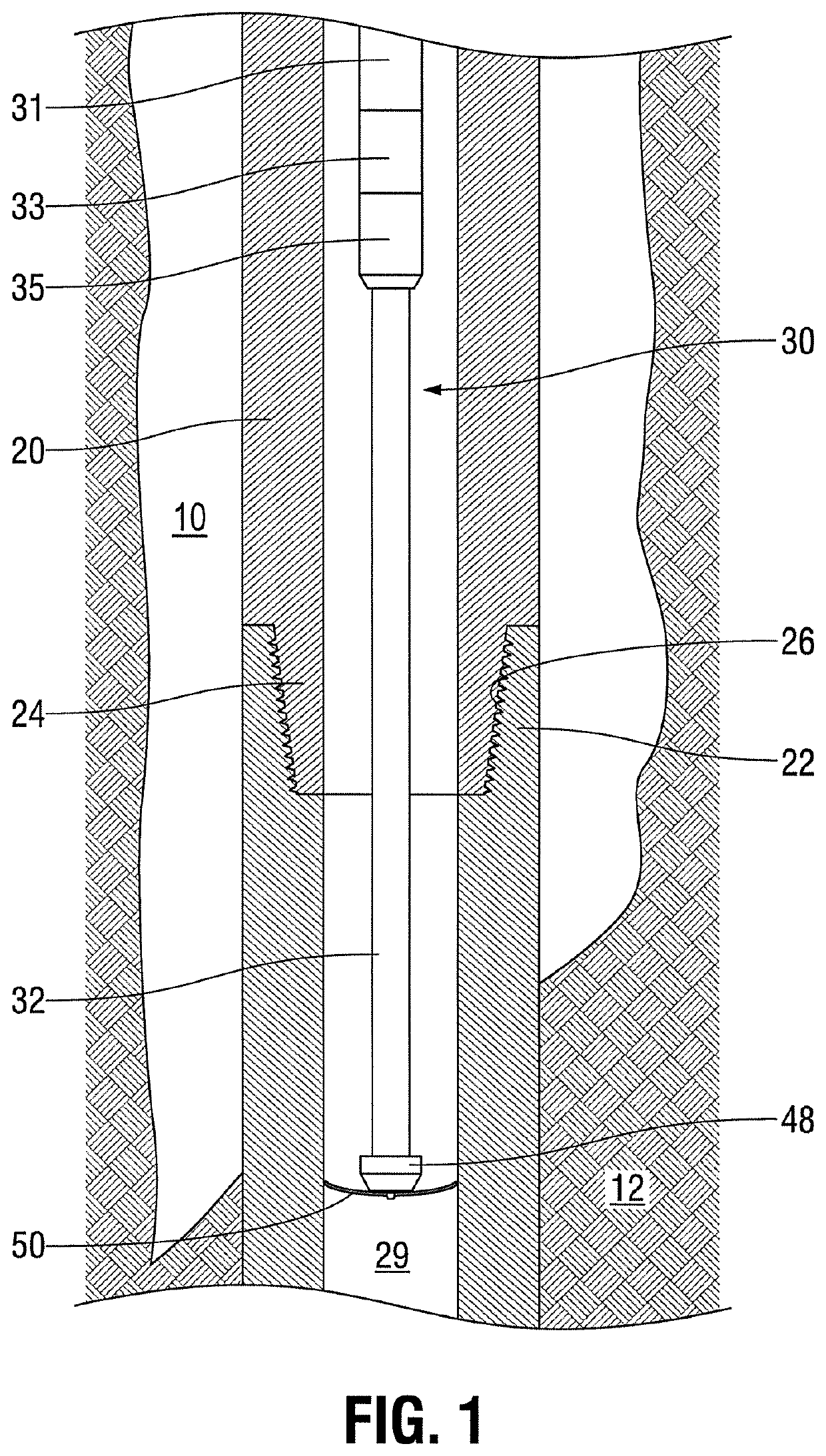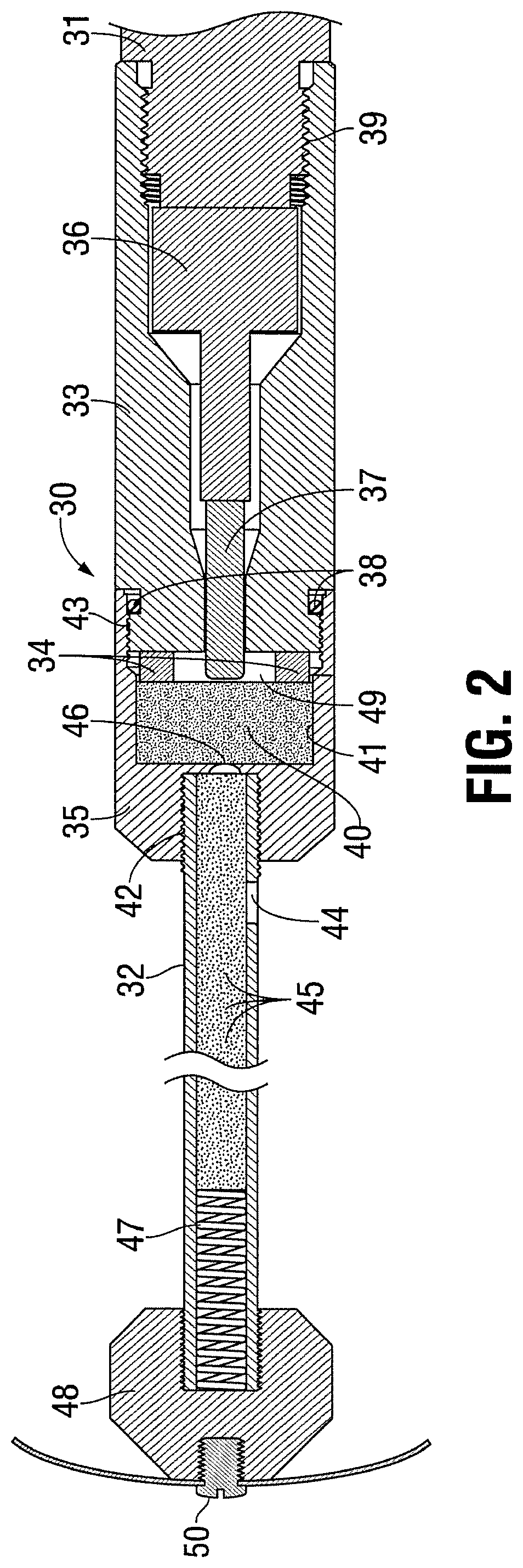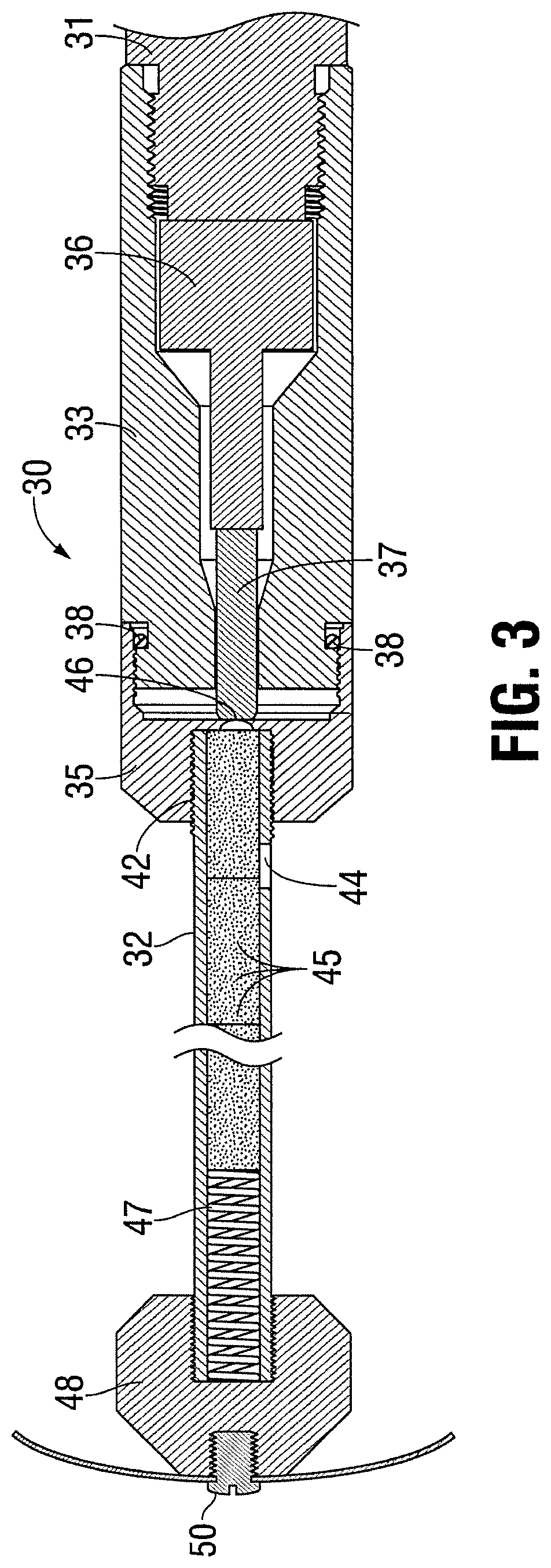Mini-severing and back-off tool with pressure balanced explosives
a technology of explosives and minisevering, which is applied in the direction of drilling casings, drilling pipes, and accessories of wells, etc., can solve the problems of pipe string occasionally being tightly stuck in a well, wall collapse for hundreds or even thousands of feet, and it is impossible to remove pipe string from the well or, in most cases, even rotate pipe string, so as to prevent contamination of booster explosives
- Summary
- Abstract
- Description
- Claims
- Application Information
AI Technical Summary
Benefits of technology
Problems solved by technology
Method used
Image
Examples
Embodiment Construction
[0043]Before explaining selected embodiments of the present invention in detail, it is to be understood that the present invention is not limited to the particular embodiments described herein and that the present invention can be practiced or carried out in various ways. As used herein, the terms “up” and “down”, “upper” and “lower”, “upwardly” and downwardly”, “upstream” and “downstream”; “above” and “below”; and other like terms, indicating relative positions above or below a given point or element, are used in this description to more clearly describe some embodiments of the invention. However, when applied to equipment and methods for use in wells that are deviated or horizontal, such terms may refer to a left to right, right to left, or other relationship as appropriate. Moreover, in the specification and appended claims, the terms “pipe”, “tube”, “tubular”, “casing”, “liner” and / or “other tubular goods” are to be interpreted and defined generically to mean any and all of such...
PUM
 Login to View More
Login to View More Abstract
Description
Claims
Application Information
 Login to View More
Login to View More - R&D
- Intellectual Property
- Life Sciences
- Materials
- Tech Scout
- Unparalleled Data Quality
- Higher Quality Content
- 60% Fewer Hallucinations
Browse by: Latest US Patents, China's latest patents, Technical Efficacy Thesaurus, Application Domain, Technology Topic, Popular Technical Reports.
© 2025 PatSnap. All rights reserved.Legal|Privacy policy|Modern Slavery Act Transparency Statement|Sitemap|About US| Contact US: help@patsnap.com



